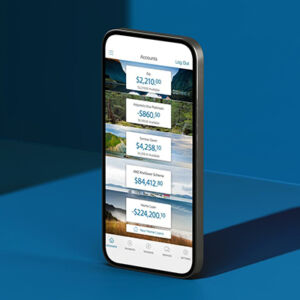Better. Stronger. Faster. Part 1.

When you’re a fast-moving professional with wall-to-wall meetings, wedged in-between determining KPIs, ROIs and the rest of it, you can’t be expected to know the finer details of the creative process. That’s why you have an agency! And why we’re here with practical tips from the studio where great ideas come to life. Straight from the horse’s mouth (or at least, those of designers, writers, and developers), we’ve put together tips that will deliver better digital and design work faster, without the budget blowouts.
In this part 3-part series we’ll be looking into how to get the best out of your creative agency when working on just about any type of project. In part 1 we’ll get into some general tips, as well as best practices for design.
General tips
Write a brief
Writing briefs is never much fun. But simply picking up the phone to call one in – even when your account manager knows your business inside and out – is an easy way to lose time and money in the long run. Better to nail down the super important things such as single-minded proposition, key messages, mandatories, and scope in the beginning than have to field multiple requests for more information. Or worse – reject creative that doesn’t hit the mark because details were missing upfront. Giving your agency the whole story and objectives upfront goes for creative briefs (‘give me a campaign’) and tactical briefs (‘update our business card’).
Stick to your brand guidelines
Companies splash lots of cash on brand guidelines. Brand guidelines that have been carefully considered to align with brand strategy. So why not stick to them rather than deny they apply to your project or audience? Things like asking for changes to logo lock-ups, adding new typefaces or random image styles, and ignoring tone of voice when it comes to punctuation are all obvious no-nos. Tonality is more of a grey area, however. Does your idea and its execution gel with your stated brand values? While you see your brand in all its incarnations day after day, your audience doesn’t. It’s consistency that builds memorability and trust, so try not to let decisions based on personal preference water down your brand’s strengths.
Invite creatives to initial briefings
You can ignore this advice if you only want to change out a logo or repeat a process your agency has done a million times before. But if you have a brief for a campaign, something big or something new, by all means pull out an extra chair for one or two creatives to come along. There are two reasons for this. One: it will allow creatives to learn about the project first-hand rather than rely on the account manager’s interpretation of what you want. Two: you may get a different and better take on what you thought you needed.
Consolidate feedback
You briefed in the project, the creative is done and now it’s back for review by you, the product team, the project team, the legal team and your boss. Everyone adds their five cents, which could lead to contradictory instructions. To avoid going round in circles and ending up with muddled messages or a suboptimal user experience, it makes sense to consolidate all feedback in one document. Then make the call on what exactly needs to change before sharing that feedback with your agency. This is where file sharing tools like Google Docs and InVision really come into their own.
Design tips
‘Can you Photoshop it?’ doesn’t always work
Photoshop can do some amazing things, but it can’t do everything. In any case, just because you can do something doesn’t necessarily mean you should. We’ve all seen Photoshop jobs gone wrong… the celebrity with the 2-cm waist, the horse with five legs.... so ask your designer for their honest opinion on what will or won’t work for your design.
Try to be specific with feedback
Designers, unfortunately, can’t read your mind. At least, not yet. So instructions like ‘make it pop’/edgy/modern/or fancy’ won’t always help much unless you tell them what it means to you. If something doesn’t look quite right, try to describe the problem so your designer can come up with a solution (examples are good).
Schedule clear milestones and stick to them
There are three typical milestones within the creative process: concept, design and refine. It’s tempting to gloss over the importance of the concept stage when it comes so early on. Maybe you’re a bit on the fence about a concept but think you have plenty of time to resolve it in the design stage. However, this second stage is all about refinement not revolution. Any concept feedback here can mean starting over again, and that’s not good for your budget or your deadline.
Bring colleagues along for the ride
You can ignore this tip when you’re the one who has the final say. But if you need buy-in from other teams or your boss it pays to bring them along for the ride too. Great campaigns have been known to fall over at the finished art stage when bosses see them for the first time. Get everyone across the concepts at the concept stage. And if you or your team find it hard to visualise what the creative team is thinking, ask for mood boards.
“Designer meet printer”
Got a packaging job coming up? If you’re unsure of all the production requirements – like the maximum length of a label – introduce your designer to your printer early on. They’ll work out what’s what, ultimately saving you time and money. Packaging projects run so much smoother when designers know what is and isn’t possible at the start of projects.







